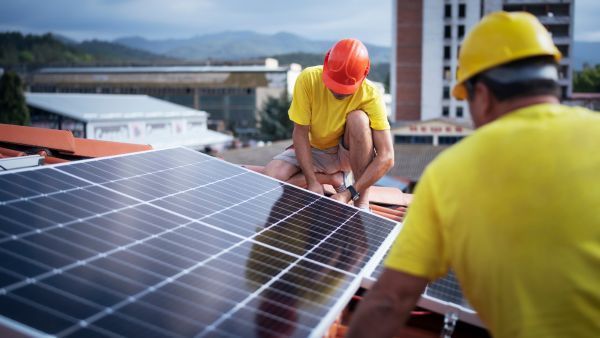In the field of renewable energies, especially photovoltaic installations, the DC disconnector switch is an essential component that guarantees the safety of people who must intervene on the installation. Here is a detailed guide for professionals on the proper selection of this essential equipment.
What are the main components of a photovoltaic system?
- Solar panels: silicon panel (semiconductor material).
- An inverter (or several) converts the direct current into alternating current and therefore usable by electrical devices.
- A fixing structure (varies according to the support ground, roof, pergola ...).
- A protective box (necessary for the overall safety of the installation against any risk such as, electric fire, electrification...). It allows to power off the installation and ensures the connection between the panels and the inverter.
- A set of cables and connectors to connect the set.
Understanding the role of the disconnect switch
First of all, it is essential to understand the importance of the disconnector switch in a photovoltaic installation. Its main function is to electrically isolate the solar panels from the rest of the circuit, thus allowing maintenance or emergency interventions without risk.
Read this article to learn about the additional safety equipment for your photovoltaic installations.
What type of disconnection for the installation of solar panels?
A protective box will be required. It can be included in the solar panel installation kit or purchased separately. This is located between the solar panels and the inverter in order to trigger if a malfunction is detected.
A dc disconnector must be added to cut off the current to allow maintenance in good conditions.
Where to put a disconnector switch in a photovoltaic installation?
Photovoltaic switch disconnectors must be installed on the AC (AC) and DC (DC) side of the inverter to allow maintenance and repair.
What are the criteria for choosing the photovoltaic DC disconnector?
Technical criteria
Nominal voltage: The switch must be designed for the specific voltage of your installation.
Rated current: It must be calibrated to the peak current that your panels can deliver.
Breaking capacity: This is the guarantee that the switch can interrupt the electrical flow safely.
The installation environment
The switch should be chosen according to its installation environment. For outdoor installation, it must be weather and dust resistant (IP rating). Temperature variations should also be taken into account for some less temperate regions.
Certifications and Compliance
Choose switches that comply with international standards and have recognized certifications, ensuring the compliance and reliability of your installation.
Ease of installation and maintenance
Choose a model whose installation and maintenance correspond to your specific constraints, including the size and mode of installation. There is always a product that exactly matches your case, a specialist can help you identify it. Adapting a product can lead to excessive complexity that can lead to high maintenance costs and reduce the longevity of the device.
The total cost of the equipment
Do not rely solely on the initial purchase price. Consider long-term expenses, including installation, regular maintenance, and switch life.
Selecting a DC disconnect switch for your photovoltaic system is a decision that should not be taken lightly. Taking into account all technical, environmental, safety standards, simplicity of installation, as well as overall costs, you will optimize the safety and efficiency of your installation.
The technical team at Optim-Elec.com is at your disposal for advice and to choose the disconnector switch that will perfectly match the requirements of your photovoltaic system. Contact us to benefit from the expertise that will maximize the chances of success of your photovoltaic project.







